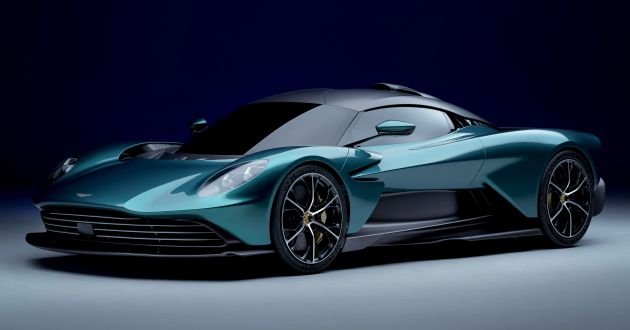Last month, Aston Martin revealed the production version of the Valhalla, an ultra-powerful mid-engined supercar that sits just below the all-singing, all-dancing, Formula 1-inspired Valkyrie. You might imagine that such a machine would be well out of reach of most Malaysians, and you’re damn right – the car is tipped to cost between £600,000 (RM3.5 million) and £700,000 (RM4.1 million) a pop.
If, however, you’re one of the incredibly lucky few to have that amount of spare change lying underneath your sofa cushion, then you’re in luck. Aston Martin Kuala Lumpur has announced that it has secured five units of the Valhalla for Malaysian buyers, giving you a chance to own and pilot a car with nearly as much power as Sebastian Vettel’s new office.
But you’d better hurry to put your name down – as of today, two units have already been spoken for. You’ll also have to wait quite a while for the car to arrive at your doorstep, as deliveries are only expected to kick off at the end of 2023.
The Valhalla has come quite a long way from the original “son of Valkyrie” concept. It too was supposed to be designed in conjunction with Red Bull Racing, but the purchase of Aston Martin by Lawrence Stroll – who also owns the now-rebranded Aston Martin Cognizant F1 Team (née Racing Point) – has put paid to those ambitions. There have been considerable changes made as a result.
Most notable is the switch from a planned bespoke 3.0 litre twin-turbocharged V6 to the M178 4.0 litre V8 sourced from Mercedes-AMG. Unlike the unit in the Vantage, the engine has been breathed on with a flat-plane crankshaft, effectively making this the mill a twin of the one in the Mercedes-AMG GT Black Series. Maximum power is rated at 750 PS at 7,200 rpm.
The Valhalla is also a plug-in hybrid, with an electric motor on the front and rear axles providing an additional 204 PS, contributing to a quoted total system output of – are you sitting down? – 950 PS and a stonking 1,000 Nm of torque. The front motor can drive the car on its own with a range of around 15 km.



The engine and electric motor are both mated to an eight-speed Graziano dual-clutch transmission, and the neat trick here is that each power source can use a different ratio when operated together to maximise performance. Gaydon is claiming a zero-to-100 km/h sprint time of 2.5 seconds and a top speed of 330 km/h.
Also tweaked significantly is the exterior. The Valhalla’s design is still aerodynamically driven, borrowing plenty of influences from the Valkyrie. But while the air still flows through the car to minimise drag, the vast tunnels that channeled the air along the sides on the concept have been minimised, while the gaping rear diffuser has shrunken down to a still fairly massive size.
Aston Martin has also slapped on a vaned grille at the front to give it a more recognisable look. Elsewhere, there’s a redesigned triple-chamber roof scoop, physical door mirrors (no more side cameras, I’m afraid) and a pop-up rear wing that replaces the flexible active carbon fibre spoiler. The company has quoted a sizeable downforce figure of 600 kg, made at 240 km/h.



Suspension is made up of pushrods all around, with two-stage hydraulic springs and adaptive spool-valve dampers from Canadian motorsports company Multimatic, which also produce similar components for the Ford GT. You’ll also find brake-by-wire carbon ceramic brakes and staggered forged centre-lock wheels that measure 20 inches in diameter at the front and 21 inches at the rear, wrapped in bespoke Michelin tyres.
All in all, Aston Martin expects the Valhalla to lap the Nürburgring Nordschleife in just six minutes and 30 seconds, which would slash the current record by a massive 13 seconds. One thing of note is that while the Valhalla is set to make its silver screen debut in the new 007 film No Time to Die, that car is based on the original concept, so not even James Bond will enjoy the up-to-date technology that eventual buyers will have.
The changes have been introduced primarily to lower the price, which has come down from a staggering £1 million (RM5.9 million). There is also no longer a 500-unit production limit.















The post Aston Martin Valhalla: 5 allocated for M’sia, 3 available appeared first on Paul Tan's Automotive News.



0 Comments